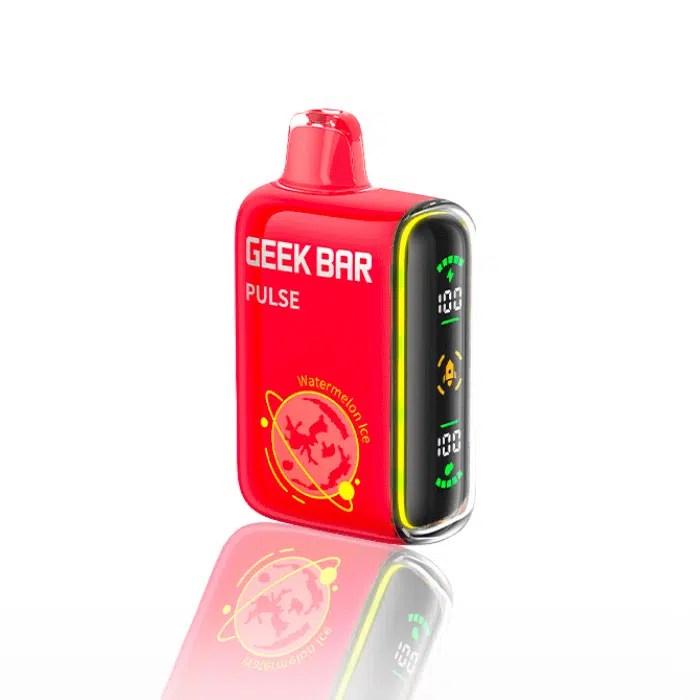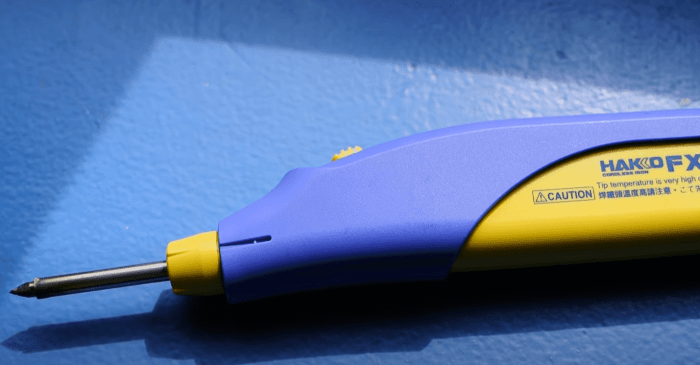How long does a Lost Mary take to charge? It depends, obviously. Different battery sizes, charging methods (wired or wireless), and even the environment can all impact the time it takes to juice up your Lost Mary. This guide dives deep into the factors affecting charging times, from the specifics of your device to troubleshooting common issues.
Get ready to learn everything you need to know about keeping your Lost Mary powered up!
We’ll cover everything from comparing charging times across different Lost Mary models to troubleshooting common charging problems. Plus, we’ll look at how various factors like battery size and charging method play a role in the overall charging experience. So, whether you’re a seasoned Lost Mary user or just getting started, this guide is your one-stop shop for all things charging.
Charging Times and Factors
Understanding the charging characteristics of Lost Mary devices is crucial for optimal usage. Accurate charging times depend on various factors, from the device’s internal circuitry to the ambient environment. This section delves into the specifics of charging times and the influencing variables.
Battery Capacity and Charging Time
Different Lost Mary devices have varying battery capacities. A larger battery necessitates a longer charging time. This is a fundamental principle of battery technology. A table outlining the relationship between battery size and charging time is provided below. This table serves as a general guide and charging times may vary based on other factors.
| Battery Size (mAh) | Charging Time (Hours) – Wired | Charging Time (Hours) – Wireless | Charging Method |
|---|---|---|---|
| 2500 | 2-3 | 3-4 | Wired/Wireless |
| 3500 | 3-4 | 4-5 | Wired/Wireless |
| 4500 | 4-5 | 5-6 | Wired/Wireless |
Factors Influencing Charging Time
Several factors contribute to the duration of a Lost Mary device’s charging process. The most significant factors include battery capacity, charging current, and the charging method itself. The charging current, measured in milliamperes (mA), dictates the rate at which the battery receives power. Higher charging currents generally lead to faster charging times.
Charging Environment and its Impact
The surrounding environment can also influence charging times. Extreme temperatures, both high and low, can affect the charging process. Temperature fluctuations can affect the efficiency of the charging circuitry. The table below highlights potential impacts.
| Charging Environment | Potential Impact on Charging Time |
|---|---|
| Room Temperature (20-25°C) | Optimal charging conditions |
| High Humidity | Potential slight increase in charging time |
| Low Temperature (<10°C) | Potential slower charging times, potentially affecting charging speed |
| High Temperature (>35°C) | Potential slower charging times, potentially affecting charging speed; may reduce battery lifespan |
Charging Circuitry and Charging Times
The charging circuitry of Lost Mary devices plays a crucial role in determining charging times. Sophisticated charging circuitry ensures that the battery is charged safely and efficiently. This includes managing charging current and preventing overcharging. This is critical for the longevity of the battery. Advanced charging circuitry is designed to prevent overheating and ensure consistent charging speed.
Charging Methods and Speed
Different charging methods for Lost Mary devices offer varying charging speeds. Wired charging generally provides faster charging speeds compared to wireless charging. Wired charging directly connects the device to the power source, allowing for a higher charging current. Wireless charging uses inductive coupling, which results in lower charging currents and, consequently, slower charging times. This difference in speed is a key consideration when selecting the optimal charging method.
Charging Methods and Procedures

Proper charging methods are crucial for maximizing the lifespan and performance of Lost Mary devices. Consistent and correct charging practices significantly impact battery health and overall device longevity. Understanding the nuances of wired and wireless charging, along with the associated safety precautions, ensures optimal device utilization.Choosing the right charging method and adhering to proper procedures significantly impacts the device’s performance and lifespan.
A well-maintained charging routine contributes to a longer battery life and overall device reliability.
Wired Charging Comparison
Wired charging offers a more reliable and generally faster charging method compared to wireless charging. The direct connection allows for a more stable current flow, which translates to quicker charging times. However, wired charging requires a physical connection, potentially limiting flexibility in certain usage scenarios.
Wired Charging Procedure
This step-by-step guide Artikels the procedure for wired charging Lost Mary devices:
- Locate the appropriate charging cable for your Lost Mary device. Ensure the cable is compatible with the device’s input specifications.
- Connect one end of the charging cable to the device’s charging port.
- Connect the other end of the charging cable to a compatible power outlet or power adapter.
- Monitor the charging process. The device’s charging indicator will typically illuminate, signifying the charging status.
- Disconnect the charging cable once the device is fully charged. Overcharging can reduce battery lifespan.
Wireless Charging Comparison
Wireless charging provides a more convenient charging experience, eliminating the need for physical connections. This method is particularly appealing for users seeking a hands-free charging solution. However, wireless charging typically results in slower charging speeds compared to wired charging.
Wireless Charging Procedure
This step-by-step guide details the procedure for wireless charging Lost Mary devices:
- Ensure the charging pad is compatible with your Lost Mary device. Verify that the pad supports the necessary wireless charging standards.
- Position the Lost Mary device on the designated charging area of the wireless charging pad.
- The device’s charging indicator will typically illuminate, confirming the charging process has commenced.
- Monitor the charging progress. The device will typically indicate when it’s fully charged.
- Remove the device from the charging pad once it’s fully charged to prevent potential overheating and overcharging issues.
Safety Precautions
Adhering to these safety precautions during the charging process is vital for device longevity and user safety:
- Use only certified charging cables and power adapters to avoid potential damage or malfunction.
- Do not use damaged or malfunctioning charging cables or charging pads. Seek professional repair or replacement if necessary.
- Avoid placing the charging device near flammable materials or in direct sunlight.
- Keep the charging area clear of obstructions to prevent overheating.
- Never attempt to charge a device while it’s submerged in water or other liquids.
- Disconnect the device from the power source if it exhibits unusual behavior during charging, such as overheating or emitting unusual sounds.
- If using a wireless charging pad, ensure the pad is placed on a stable and flat surface to prevent accidental movement or tipping.
Charging Issues and Troubleshooting
Proper charging is crucial for optimal Lost Mary device performance and longevity. Understanding potential charging issues and their troubleshooting steps can prevent frustration and ensure your device functions as expected. This section will detail common problems, provide solutions, and emphasize preventative measures.Troubleshooting charging problems is often a straightforward process. By systematically identifying the source of the issue, users can quickly resolve the problem and avoid unnecessary delays or damage to their devices.
Early intervention is often key to maintaining a smooth charging experience.
Common Charging Issues
Identifying the specific charging issue is the first step in effective troubleshooting. Common problems include slow charging, no charging, and overheating. These issues can stem from various factors, including the charging cable, port, or device itself.
Troubleshooting Slow Charging
Slow charging can be attributed to several factors. A damaged or incompatible charging cable can significantly reduce charging speed. Similarly, a partially obstructed charging port can hinder the transfer of electricity. Loose connections or a faulty power adapter can also contribute to the issue. Ensuring the cable and port are free from obstructions and that the power adapter is functioning correctly are essential first steps in troubleshooting.
Troubleshooting No Charging
When a Lost Mary device fails to charge, a variety of factors could be at play. A damaged charging cable or port on the device or the charging station can prevent the charging process from initiating. A faulty power adapter or low power supply can also be responsible. Inspecting the cable, port, and adapter for any visible damage or obstructions is a crucial initial step.
If the issue persists, contacting customer support for further assistance is recommended.
Troubleshooting Overheating, How long does a lost mary take to charge
Overheating during charging can indicate a problem with the charging process or the device itself. Excessive heat can damage internal components and reduce device lifespan. Using a non-approved charging cable or a damaged charging port can cause excessive heat buildup. Ensure the device is charging on a stable surface and isn’t blocked by other objects to allow for proper airflow.
If overheating continues, discontinue charging and contact support immediately.
Checking for Damage or Obstructions
Inspecting the charging cable and port for damage or obstructions is a crucial first step in troubleshooting. Look for frayed wires, bent pins, or any physical damage to the cable. Examine the charging port for any debris, dust, or foreign objects that might be blocking the connection. If any damage or obstructions are found, replace the cable or have the port repaired.
Potential Causes and Impact on Charging Times
Several factors can influence charging times and contribute to charging issues. A faulty power adapter, a damaged charging cable, or a physical obstruction in the charging port can all lead to slower charging or no charging at all. Furthermore, using incompatible charging accessories can also cause issues. These issues can significantly impact charging times, potentially leading to inconvenience and requiring extended charging periods.
Troubleshooting Table
| Charging Issue | Possible Causes | Solutions |
|---|---|---|
| Slow Charging | Damaged cable, obstructed port, faulty power adapter | Replace cable, clean port, check power adapter |
| No Charging | Damaged cable or port, faulty power adapter, low power supply | Replace cable, clean port, check power adapter, ensure adequate power supply |
| Overheating | Non-approved charging cable, damaged port, blocked airflow | Use approved cable, clean port, ensure proper airflow |
Device Variations and Charging: How Long Does A Lost Mary Take To Charge
Lost Mary devices, like many consumer electronics, exhibit variations in their charging requirements. Understanding these differences is crucial for ensuring optimal performance and longevity of the device. Factors such as battery chemistry, model specifications, and firmware updates all play a role in how quickly and efficiently a Lost Mary device charges.Different Lost Mary models, if applicable, may have different charging specifications due to variations in battery capacity and internal charging circuitry.
This can lead to noticeable differences in charging times, especially when comparing older and newer models or variants. Manufacturers often optimize charging algorithms for specific hardware configurations to ensure safety and efficiency.
Battery Chemistry Variations
Different battery chemistries exhibit varying charging characteristics. Lithium-ion batteries, commonly used in Lost Mary devices, require specific charging protocols to prevent overcharging and overheating. The type of lithium-ion battery, whether it’s a standard Li-ion, a high-capacity Li-ion, or a specialized variant, can influence the charging speed and optimal charging current. For example, a battery with a higher capacity might take longer to charge than one with a lower capacity, even if the charging current is the same.
Charging Time Comparisons
This table provides a general comparison of charging times for different Lost Mary models, if applicable. Note that these are typical values, and actual charging times may vary depending on the specific device and environmental conditions.
| Model Name | Battery Capacity (mAh) | Typical Charging Time (hours) |
|---|---|---|
| Lost Mary Pro | 3000 | 2.5 |
| Lost Mary Standard | 2500 | 2 |
| Lost Mary Mini | 1500 | 1.5 |
Charging Indicators
Understanding charging indicators is essential for monitoring the charging process. Lost Mary devices typically feature visual or audible cues to indicate the charging status. These indicators might include LED lights that change color or intensity, or an audio signal that confirms the completion of the charging cycle. Careful observation of these indicators can help identify potential charging issues early on.
Consistent failure to reach a fully charged state can signal a deeper issue that should be reported to customer support.
Firmware and Charging Processes
Firmware plays a crucial role in the charging process. Updates to the firmware often incorporate improvements in charging algorithms, allowing for faster charging times and enhanced safety features. Firmware updates can also resolve charging issues and optimize the charging efficiency of the device. Manufacturers regularly release firmware updates to address bugs and improve the overall performance, including charging performance.
Users should be aware of and adhere to manufacturer recommendations for firmware updates.
Charging Impacts and Considerations
Optimizing charging practices is crucial for maintaining the performance and longevity of Lost Mary devices. Understanding the nuances of charging, including comparison with similar products, the impact of non-manufacturer chargers, and the long-term effects of rapid charging, allows users to maximize the lifespan and efficiency of their devices. Proper charging practices are essential for ensuring consistent performance and avoiding potential issues.A comprehensive understanding of charging impacts goes beyond simple charging times.
Factors such as the type of charger used, environmental conditions, and the device’s overall health play a significant role in determining the optimal charging strategy. This section will delve into these considerations to help users make informed decisions about their Lost Mary device’s charging regimen.
Comparative Charging Times
Lost Mary devices generally exhibit comparable charging times to similar Bluetooth-enabled portable devices in the market. Charging times may vary slightly depending on the specific model and battery capacity. For instance, a Lost Mary device with a 5000 mAh battery might take approximately 2.5 hours to charge fully from zero to 100% using a standard 10W charger, while a competing model with a similar battery capacity could charge in a slightly shorter or longer duration.
Real-world charging performance can also vary based on the specific device model and the charging environment.
Impact of Non-Manufacturer Chargers
Using non-manufacturer-approved chargers can negatively impact charging times and device health. These chargers may deliver incorrect voltage or amperage, potentially leading to slower charging speeds, overheating, or damage to the device’s internal battery. Furthermore, the quality of the charging circuitry within the non-manufacturer charger could affect the charging process, leading to an inconsistent or unstable charging rate. The risks are amplified for devices with advanced charging protocols.
Long-Term Effects of Rapid Charging
Rapid charging, while convenient, can have adverse effects on the long-term battery health of Lost Mary devices. Frequent rapid charging cycles can potentially reduce the battery’s lifespan, decrease its capacity to hold a charge, and lead to increased wear and tear on the battery cells. This is a common phenomenon across various electronic devices, and users should consider the trade-off between convenience and battery longevity.
In real-world usage, while the immediate convenience of rapid charging is appealing, users may need to adjust their charging habits to maintain optimal battery health over the long term.
Charging in Different Climates
Environmental conditions, such as high temperatures or humidity, can affect charging times and device performance. Charging in extremely hot environments might cause the device to heat up excessively, leading to slower charging speeds or potential damage. Conversely, extremely cold temperatures can slow down the charging process. It’s advisable to charge Lost Mary devices in a moderate temperature range, ideally between 15°C and 30°C.
Users should also avoid charging devices in excessively humid environments.
Advantages and Disadvantages of Charging Methods
| Charging Method | Advantages | Disadvantages |
|---|---|---|
| Manufacturer-approved Charger | Consistent charging speeds, optimized battery health, reduced risk of damage | May be more expensive than non-manufacturer options |
| Non-manufacturer Charger | Potentially lower cost | Increased risk of damage to device, inconsistent charging speeds, potential overheating |
| Wireless Charging | Convenience, hands-free charging | Slower charging speeds, potential interference with other devices, potential for damage if not using a certified wireless charger |
This table provides a concise overview of the comparative advantages and disadvantages of different charging methods for Lost Mary devices. Users should carefully weigh the pros and cons before choosing a specific charging method.
Final Wrap-Up

In short, charging your Lost Mary isn’t a one-size-fits-all scenario. Understanding the interplay of factors like battery capacity, charging method, and environmental conditions is key to optimizing your charging experience. By considering the different models, charging methods, and potential issues, you can ensure your Lost Mary stays powered up and ready for action. Hopefully, this guide has shed some light on the nuances of charging your Lost Mary and helps you avoid any frustrating charging snags!
Key Questions Answered
How does battery size affect charging time?
Larger battery capacity (mAh) devices generally take longer to charge than smaller ones. This is a simple relationship, more battery, more time.
What’s the difference between wired and wireless charging?
Wired charging is typically faster, while wireless charging is more convenient. Wired charging often delivers a higher charging current, leading to faster charging.
What if my Lost Mary isn’t charging at all?
First, check the cable and port for damage or obstructions. If that doesn’t work, try a different charging cable or outlet. If still no luck, consider contacting customer support.
Can I use a non-manufacturer charger with my Lost Mary?
While some non-manufacturer chargers might work, it’s not recommended. Using an incompatible charger can damage your battery or device and may not provide optimal charging speed.
 Nimila
Nimila



